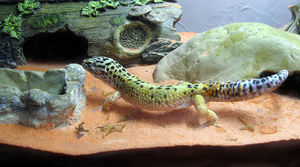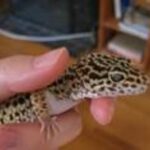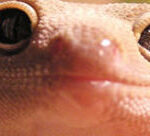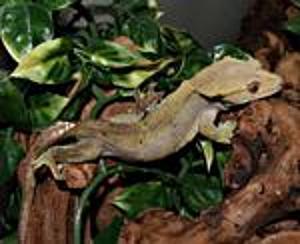If you’re a new Leopard Gecko owner, congratulations! Leopard Geckos are one of the most docile, colorful and intriguing reptile pets. Feeding time for your gecko can be both amusing and an educational experience. To safely feed your leopard gecko, you will need to do more than just “fill a bowl” with dried pellet leopard gecko food.
Although pre-packaged commercial leopard gecko foods seem to offer a complete diet, your gecko will need a variety of food items in his diet to satisfy not only his nutritional needs, but also his natural instincts of hunting and catching prey.
Crickets
Leopard geckos love to eat crickets. You will want to purchase the crickets from a pet store. Never feed your gecko crickets found outside or in your home. These crickets may have been in a yard with fertilizer, weed killer or pesticides, which can transfer to your pet. Crickets purchased at a pet store are specially bred in captivity solely for reptile food.
When you purchase crickets, be sure you are buying the correct size for your leopard gecko. Look at your gecko’s head, and purchase crickets that are no wider than half the width of his head. Young leopard geckos will eat pinhead crickets, while adult geckos can eat full size adult crickets.
To prepare your crickets for feeding time, put the desired amount in a small plastic bag. The quantity will vary depending on the age of your gecko. Start out trying 5-6 crickets per meal. If your gecko doesn’t finish them all, decrease them number next time. Baby leopard geckos should be fed daily, while adults can be fed once every two days.
Next you will need to add a little calcium powder to the bag, close it and shake the bag until the crickets are coated with the white powder. Calcium power is essential for your leopard gecko’s bone health.
Now, the crickets are ready to be put into your leopard gecko’s tank. They won’t stay in a bowl, so just adding them to the tank near your gecko is fine. Your gecko should hunt the crickets and catch them.
Mealworms
Mealworms are another staple in a leopard gecko’s diet, although they can make your gecko too fat if fed too often. Alternating crickets and mealworms will give your gecko variety, and keep his weight in check. If he seems to be getting a little thick around the middle, ease off the mealworms, and stick to crickets or commercially packaged leopard gecko food.
To prepare mealworms for your leopard gecko to eat, you will need a small knife and a steady hand. The heads of the mealworms need to be removed to avoid injury to your pet. If a leopard gecko eats a whole mealworm head-first, the worm can bite your gecko as it’s going into the gecko’s stomach. I have seen incidents where mealworms will actually eat their way out of a gecko, killing the gecko in the process.
Water
Last but not least, your leopard gecko needs to have continual access to clean fresh water. If you need to use tap water, be sure to add a de-chlorinator, to make the water safe for your reptile pet.
Offer water in a shallow bowl sprinkled with a few rocks for him to walk on. You will also want to continually mist your leopard gecko’s tank not only to increase the humidity levels, but also for your gecko to drink. Leopard geckos drink water by lapping water droplets off of leaves and rocks.
Be sure to mist the leopard gecko’s tank frequently and check the water bowl since it will likely get full of sand from your gecko’s feet.




